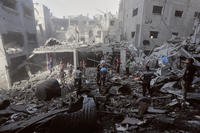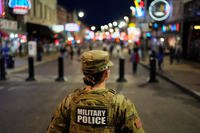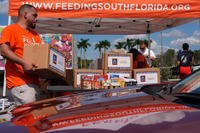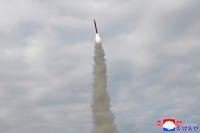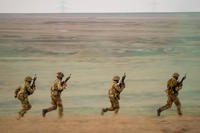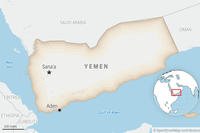U.S. Army medical experts have teamed up with a Colorado-based research firm to create a briefcase-sized device that medics can use to transform even "ditch water" into intravenous fluid -- a life-saving battlefield necessity for treating wounded soldiers.
Battalion aid stations and combat medics use one-liter IV bags filled with Ringer's lactate, or lactated Ringer's solution: a sterile fluid made of sodium, potassium and calcium to treat dehydration and deliver medicines into wounded or injured soldiers.
But as the Army prepares for future war, resupplying isolated units on the battlefield with medical necessities such as blood and IV solution will be a constant challenge, officials have said in the past.
As a possible fix to this problem, U.S. Army Medical Materiel Development Activity has been working for the past two years with TDA Research, Inc. to create a working prototype of what it calls the Lactated Ringer's Solution Generator. The lightweight, portable device -- weighing 11 pounds and measuring 18 inches high, 10 inches wide and six inches deep -- can transform any groundwater source in austere terrain into a one-liter bag of the solution in roughly six minutes, Girish Srinivas, CEO of TDA Research, told Military.com.
Srinivas's firm has received just over $1 million in research funding since 2018 from the Defense Health Agency's Small Business Innovation Research program to design and build the device.
"We created this just for the Army," Srinivas said. "The source water flows through this device and there is [a lactated Ringer's] concentrate that is injected and the source water ends up going through filters into an IV bag and ends up making the correct concentration of LR in IV bags."
Austin Langdon, a former Army flight medic, who serves as the assistant product manager on the effort, raved about the innovation in a Dec. 23 Army release.
"This unit can make LR solution from practically any water source, including ditch water," Langdon said in the release. "Without question, this small device will dramatically reduce the Army's logistical footprint of having to ship and store lactated Ringer's solution, which is the fluid of choice for resuscitation if blood is not available on the battlefield."

Langdon, who works at the Army's Warfighter Deployed Medical Systems Project Management Office, demonstrated the unit for Army Brig. Gen. Michael Talley, commander of the Army's Medical Research and Development Command and Fort Detrick, Maryland.
The LR generator runs on a rechargeable lithium-ion cell that can produce more than 30 bags of LR solution from a single charge.
The Army's senior leadership has repeatedly stressed that the future battlefield will require units to operate farther apart, isolated from any kind of support.
Earlier in the fall, maneuver officials at Fort Benning, Georgia tested "promising" new versions of commercial quadcopters capable of carrying ammunition, water and other supplies to forward units on the battlefield during Army Expeditionary Warrior Experiment (AEWE) 2021.
"Army leadership is continually seeking ways to reduce the logistical strain of getting much-needed resources to the frontline," Langdon said in the release. "Products such as the LR Solution Generator are far-forward-leaning solutions that can help us think outside of our normal parameters of operation."
But the device, which still needs to be approved by the Food and Drug Administration (FDA), is not yet ready for battlefield use, Srinivas said, adding that it will likely be "one to two years" before it's ready for fielding.
"It is not fully ruggedized; it's a prototype," he said. "We have developed what I would call a generation-two device. The next step is looking for some funding from a program office to make large numbers of prototypes and get FDA approval."
-- Matthew Cox can be reached at matthew.cox@military.com.
Related: Army Maneuver Officials Want to Buy Ammo Resupply Drones and Give them to BCTs


